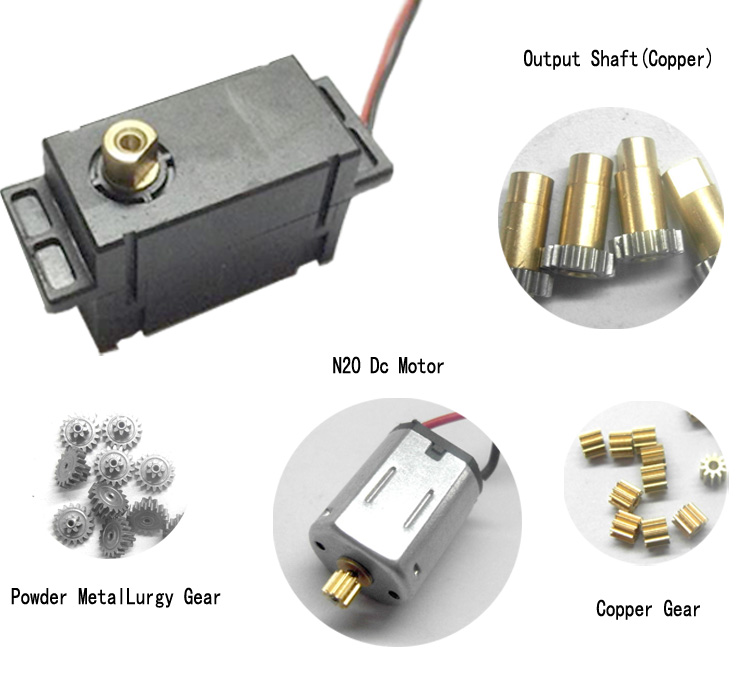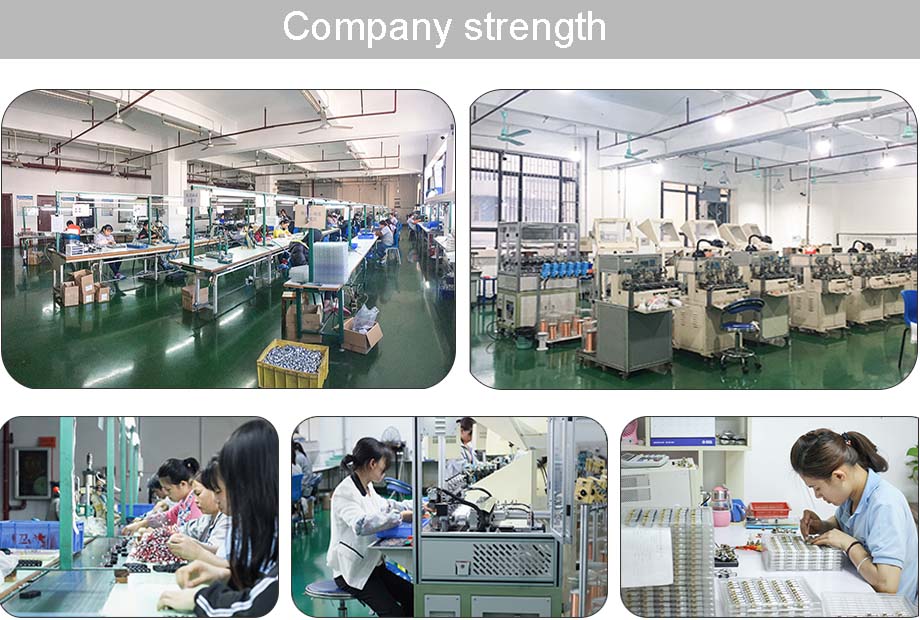In June 2002, in order to cope with various restrictions imposed by foreign patents on the Chinese industry, the AVS Standards Working Group was established. However, AVS bumped all the way, and was even considered to be "dying" in 2007.
Nearly the past ten years, AVS seems to usher in the best opportunity: According to the recently promulgated national standards of "General Specifications for Terrestrial Digital TV Receivers" and "General Specifications for Terrestrial Digital TV Receivers", the Chinese market will be sold one year later All digital TV sets purchased by users will have built-in AVS functions, and receivers (commonly known as set-top boxes) purchased by families for receiving digital terrestrial TV will also have AVS functions.

However, the "Chinese Standard" seems to be caught in such a cycle. On the one hand, the policy is very supportive of scientific and technological innovation. On the other hand, the serious lack of industrialization has made its living space increasingly narrow. The dispute over the EVD standard, TD-SCDMA, which has been listed as an international standard, has been bumpy, and WAPI has applied for an international standard "abortion", which has become a brutal reality that is rarely used by wireless devices after standard configuration.
AVS, will it be the next WAPI?
Another piece of "national standard" bitter history
In 2005, the main competitors of AVS were MPEG-2, MPEG-4, H.264 (MPEG-4 AVC). Faced with the fact that broadcasting and television were deploying digital TV at the time, and Netcom and Telecom were piloting IPTV, the AVS standard hoped to be able to intervene and have its own field of practical application. However, he was struggling to become a national standard eight months after the declaration and had to wait.
Due to the lack of opportunities for industrialization, relevant government departments have doubts about promulgating it as a national standard. Conversely, because they have not become a national standard, companies in the industrial chain dare not really invest. AVS, in this “chicken first or egg first†dilemma, missed a series of opportunities before it officially became a national standard in 2006.
By 2007, although AVS was used in the trial network of Netcom, analysts pointed out that the radio and television mobile TV (CMMB) has clearly stated that the codec standards are MPEG-4 and DRA, and AVS is not among them. In addition, AVS is also difficult to become a mandatory standard of the national standard DMBT (terrestrial digital television). As a result, AVS seems to have been blocked in the road of mobile TV and terrestrial digital TV, "may be dying."
Technology and cost advantages are obvious
Looking back at this reality, Zhong Dengxiang, deputy general manager of Shanghai Guomao, one of the leading R & D units of the AVS national standard, analyzed that in 2002, DVD international standards suddenly held high patent sticks, and patent licensing fees reached 39% of the total production cost, resulting in a large number of local DVD companies Failure, the birth of AVS is related to this background. Compared with MPEG-4's foreign patent agency MPEGLA, the new patent licensing scheme has significantly increased the patent fees, taking away about 50 billion yuan from China each year, and AVS charges only 1 yuan per terminal.
Zhang Weimin, secretary general of the AVS Audio and Video Industry Alliance, said that from a technical perspective, AVS also has its advantages. He told reporters, "The industrialization of AVS has not been as big as imagined, but it has continued to develop tenaciously. Because it can indeed reduce the patent risk and bring core value to operators." The core value lies in, as a new generation coding standard, The technical performance of AVS is equivalent to H.264, but its algorithm complexity is reduced by 30% to 70%, and the compression ratio is nearly double that of the previous generation of MPEG-2, which can save half of the spectrum.
In addition, the AVS Industry Alliance has never given up. Before the promulgation of the "General Specifications for Terrestrial Digital TV Receivers" this year, in order to meet the 2008 Olympic Games, Shanghai Oriental Pearl began broadcasting 16 sets of AVS programs. The problem of users without cable TV in the suburbs watching the Olympic Games.
What I worked hard for was the decision of the 2009 ITU ITU-T meeting that AVS and MPEG-2, ITU-T H.264, and the industry standard SMPTE VC-1 developed by Microsoft in the United States were listed as international video standards. Corresponding support also came immediately.
The scope of commercial use at home and abroad is gradually expanding
In October last year, the State Administration of Radio, Film and Television officially tendered for the "Wireless Radio and Television Digitization Project" AVS codec. After that, Taiyuan and other five cities opened AVS terrestrial digital TV applications; in February this year, Hunan opened a prelude to AVS provincial-scale large-scale applications. As of now, the AVS standard has begun emergency testing in second- and third-tier cities.
Zhang Weimin specifically cited the two cities of Zhuzhou, Hunan and Anyang, Henan to explain: "These two cities at the city level are moving faster on terrestrial digital TV, with an average user of around 100,000. Before that, the frequency resources were very tight. Moreover, the compression efficiency of MPEG-2 itself is not high. At present, they have turned all the original MPEG-2 users to AVS, which not only supports independent standards but also saves resources.
Zhong Dengxiang said that from the good test conditions of Anhui Provincial Network, Liaoning Provincial Network, many regions of Henan, Urumqi, Xinjiang and other places, it can be shown that AVS core equipment has fully reached large-scale commercial conditions, exceeding the expectations of operators.
Relative to the difficulty of WAPI going abroad, the terrestrial digital TV in the three provinces of Laos, Pakse, and Lamb has adopted the AVS standard. Zhong Dengxiang introduced that the low patent fees and the high cost performance of core products also bring the convenience of promotion abroad.
Lock Motor product introduction:
Safe Lock Motor, also known as The anti-theft lock motor, in the field of electronic Lock technology, Safe Lock Motor is a mechanical Lock components associated with the electronic control unit of the important parts.
Functions: it is widely used in various intelligent locks, such as Shared bicycle lock, fingerprint lock, glass lock, safe lock, hotel lock, family lock, inductive smart lock, etc
Features: Motor For Safe Lock is based on micro precision reducer development, small intelligent micro precision reducer can do 10 mm in diameter, is widely used in safe, locks, smart locks, sensor intelligent lock;
This kind of motor has the characteristics of low noise, low energy consumption, small volume, light quality, high precision, large torque and durability
Method of use: the best stable in horizontal plane, installed on the Safe Lock Motor output shaft parts, cannot use a hammer to knock, knock prone to press into the dc Safe Lock Motor drive, may cause damage to internal components, and cannot be used in the case of blocked.

Operating temperature range:
Gear Motor For Safe Lock should be used at a temperature of -10~60℃.
The figures stated in the catalog specifications are based on use at ordinary room temperature catalog specifications re based on use at ordinary room temperature (approximately20~25℃.
If a Safe Lock Motor is used outside the prescribed temperature range,the grease on the gearhead area will become unable to function normally and the motor will become unable to start.Depending on the temperature conditions ,it may be possible to deal with them by changing the grease of the motor's parts.Please feel free to consult with us about this.
Storage temperature range:
Gear Motor For Safe Lock should be stored ta a temperature of -15~65℃.
In case of storage outside this range,the grease on the gearhead area will become unable to function normally and the motor will become unable to start.
Service life:
The longevity of Dc Motor For Safe Lock is greatly affected by the load conditions , the mode of operation,the environment of use ,etc.Therefore,it is necessary to check the conditions under which the product will actually be used .The following conditions will have a negative effect on longevity.Please consult with us should any of them apply.
â—Use with a load that exceeds the rated torque
â—Frequent starting
â—Momentary reversals of turning direction
â—Impact loads
â—Long-term continuous operation
â—Forced turning using the output shaft
â—Use in which the permitted overhang load or the permitted thrust load is exceeded
â—A pulse drive ,e.g.,a short break,counter electromotive force,PWM control
â—Use of a voltage that is nonstandard as regards the rated voltage
â—Use outside the prescribed temperature or relative-humidity range,or in a special environment.
â—Please consult with us about these or any other conditions of use that may apply,so that we can be sure that you select the most appropriate model.
when it come to volume production,we're a major player as well .each month,we rurn out 600000 units,all of which are compliant with the rohs directive.Have any questions or special needed, please contact us, we have the engineer group and best sales department to service to you
Looking forward to your inquiry. Welcome to our factory.

Safe Lock Motor
Safe Lock Motor,Motor For Safe Lock,Dc Motor For Safe Lock,Gear Motor For Safe Lock
Shenzhen Shunchang Motor Co., LTD. , https://www.scgearmotor.com